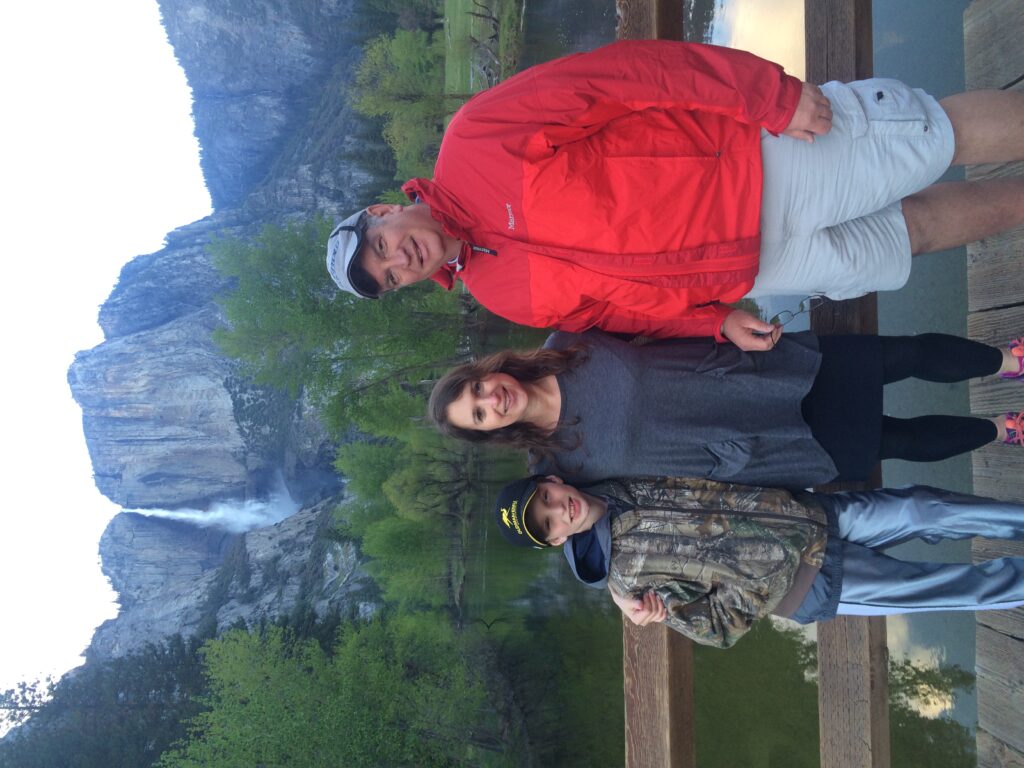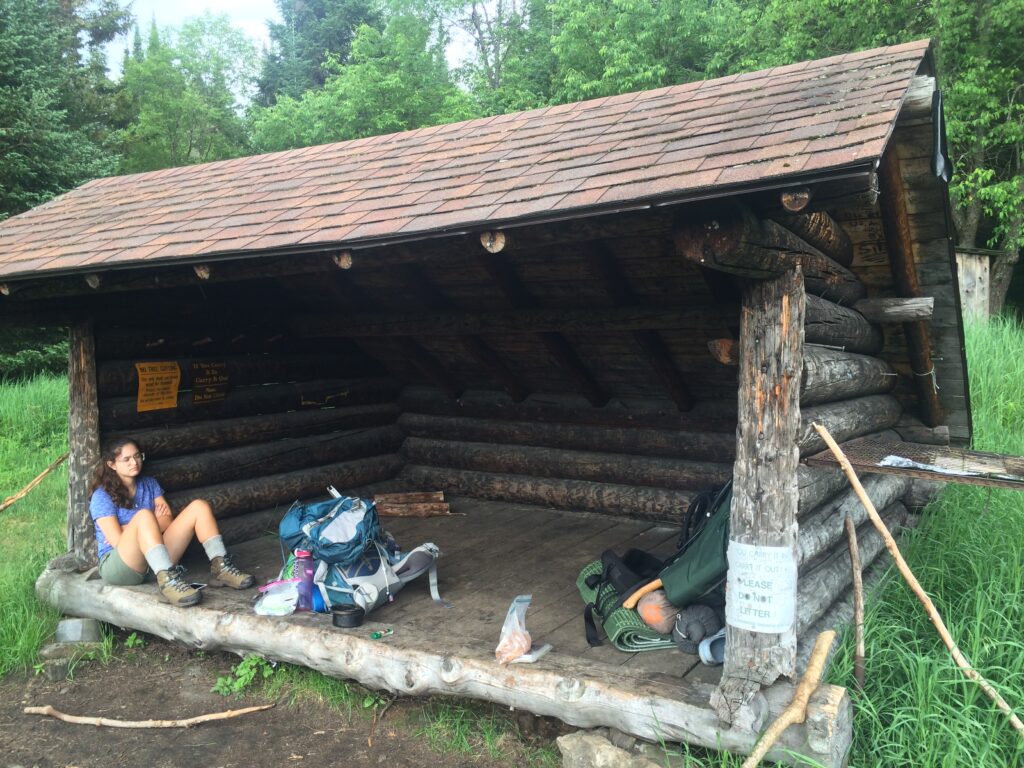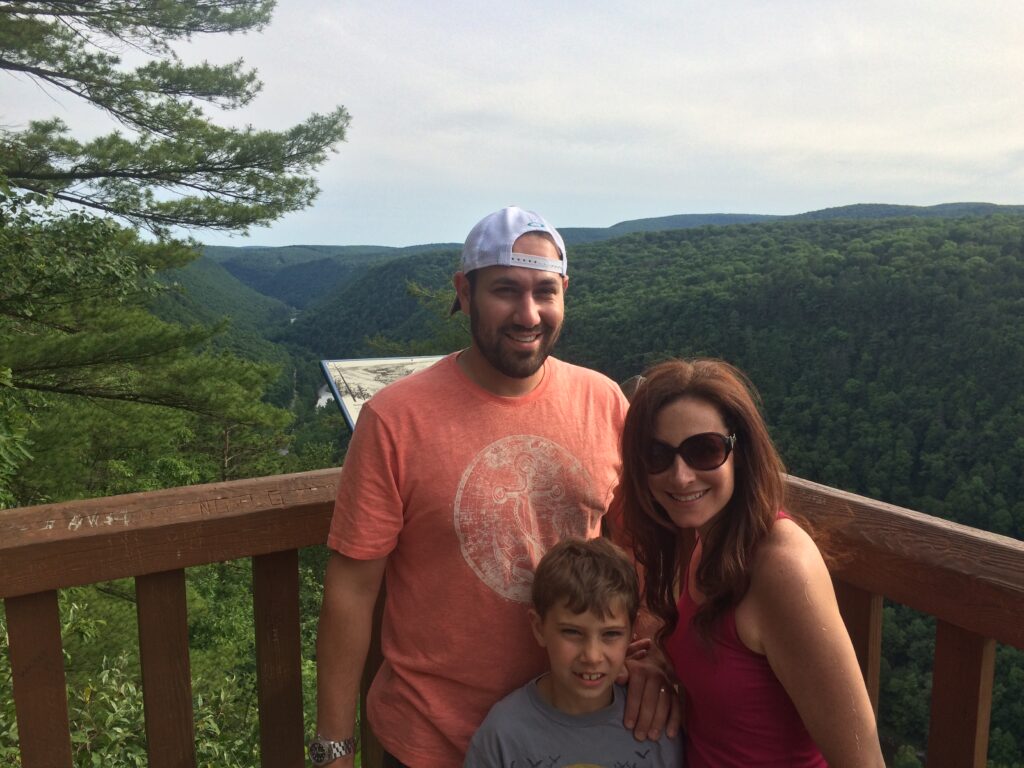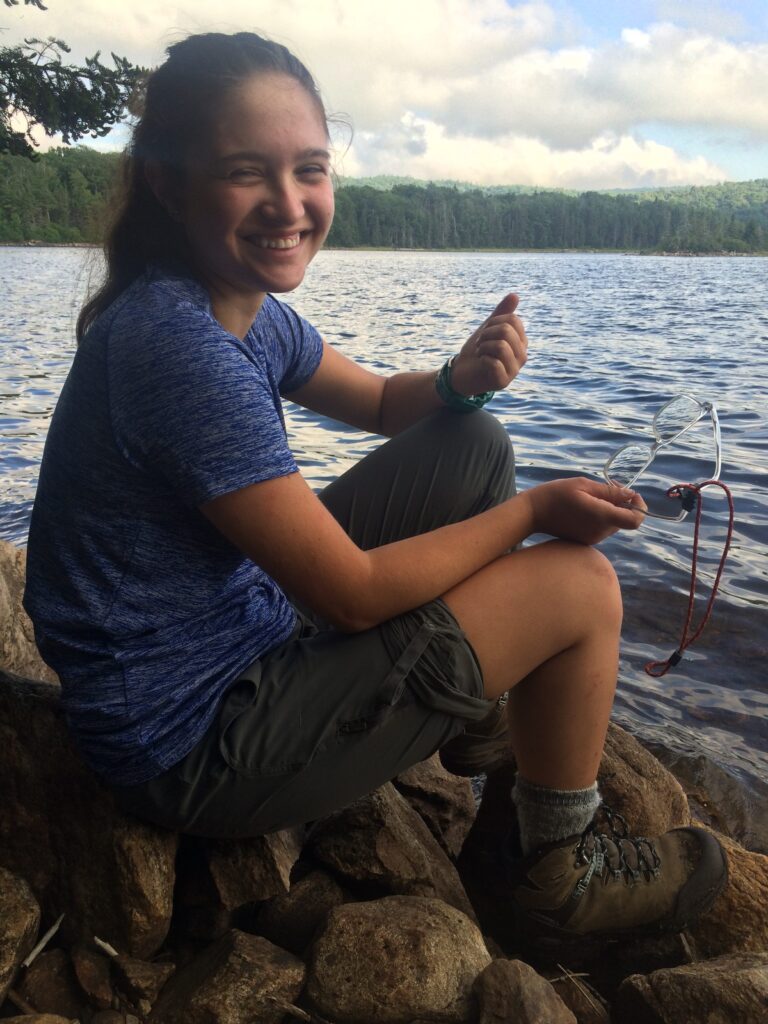Posts Tagged → development
Trump Great American Outdoors Act hits Conservation Home Run
Conservation is where I have spent my entire career, and it is where my heart resides day in and day out. So it is with great happiness that I see President Trump sign into law the Great American Outdoor Act, which will do the nuts and bolts environmental protection America needs, without the regulation that America does not need.
The fact that so many political appointees within the Trump Administration were cheerleaders for the GAOA says a lot about the political tenor there. So many people accuse the Trump Administration of being some kind of radical “right wing” blah blah, and the fact is that the entire administration is loaded with middle-of-the-road professionals, who hold a mix of political, philosophical, and ideological views. In past Republican administrations, there were plenty of appointees who would have blocked GAOA, or held it up. GAOA is a signature achievement for President Donald Trump, and it is a huge win for Americans.
GAOA fully funds the Land and Water Conservation Fund for the first time in a zillion years. It provides adequate funding for federal and state parks infrastructure updates, operations, and maintenance costs. These are the costs that are always deferred in every administration. It is a subject I wrote my master’s thesis on at Vanderbilt University, and it is a subject that has never gone away, until now: Federal recreational infrastructure has been woefully underfunded for decades. Many state parks across America are in even worse shape than that National Parks.
For example, in 2016 my teenage daughter and I hiked half of the Northville Placid Trail, which runs through the Adirondacks. At the end of our ninth day, as we waited out a looming thunderstorm in a rustic but comfortable lean-to deep inside designated wilderness, on a hike in which we had encountered only a few other people, my daughter sat looking at her dead iPhone. Like Gollum looking at The One Ring, only my daughter looked more disgusted and glum than happily mesmerized.
“I have to get out of here. I want to talk to my friends. I want to know what is happening in the world. We need to go,” she said, and picked up her backpack, jumped down onto the grass, then shouldered her backpack.
Oh, I tried to persuade her to spend the night and stay out of that coming downpour. But she would have nothing of it, and she set off by her own teenage self, going somewhere, maybe anywhere, and I was standing there watching her pick her way into the forest.
Hours later we emerged at Moose River Plains, what maps describe as a rustic New York State recreational area tucked away deep in the Adirondack wilderness. What we found was a boarded up main building, boarded up out buildings, no gate, and no official staff. Instead, a bunch of locals who regularly camp there had taken over the official duties of park rangers. Even the land line phone system was not working. It was a very kind local who drove us, each drenched to the bone and with sodden packs, to the closest village, where we could contact our driver and get back to our own vehicle parked at a Baptist church in Northville, so my daughter could get home and talk with a zillion friends simultaneously.
Turned out that Moose River Plains was victim to a New York State budget that prioritized funding illegal aliens, but not state parks.
The Moose River Plains experience was worse than our visit the year before to Saratoga National Battlefield, by far. But seeing Saratoga National Battlefield, where the brave fight for American freedom and independence was won, in such terrible disrepair and threadbare means, was frankly shocking. One expects the National Park Service to do so much better. And when we spoke with a park ranger there, she was clearly hurt, personally, as she explained the money constraints that park faced. NPS just could not get the job done.
All of this is to say that finally, money floweth in the right direction. The need out there for public infrastructure is almost beyond compute. It is about time that America invested in our national parks and forests, state parks and forests, local and county parks, and the myriad other adjunct little recreational areas, like Moose River Plains, so that Americans might enjoy our public outdoors.
And about that public outdoors thing: Public land is a public good. Public land is one of the very few things that government does pretty well. And even when government land managers fail, the outcome is almost always simple neglect; the land always remains, the wildlife habitat remains. Which means the opportunity for recreation, hunting, fishing, hiking, camping etc remains. It is not a real material loss when land managers screw up or there isn’t enough money to operate the park entrance gate house; just missed opportunities, and putting a frowny face on a public symbol.
Congratulations to President Trump for pushing hard for GAOA, for hiring the right kind of land management staff and public lands leaders, and for caring about our public lands at all levels – local, state, and federal. Trump understands Americans, and he knows how much we care about our public lands, our state parks. And he knows how important it is to constantly invest in those places, so that they don’t fall into disreputable disrepair, like Moose River Plains had fallen.
One of the parts of GAOA that is so very appealing to me is the public land acquisition funding. As development never sleeps, what were nice public spots to hunt or hike in suddenly find themselves cut off or surrounded or overrun by development. It is nice that states and local governments will finally be able to buy that ‘Mabel’s Farm’ the community always wanted, and could not afford.
There is going to be a lot of Mabel’s Farms bought with GAOA money in the next few years, a lot of Nature conserved, and a lot of communities and hunting places protected, as a result. Thank you, President Trump, conservationists everywhere appreciate your leadership on this important policy area.

With special people at Yosemite. Can we imagine America without Yosemite? It takes money to protect these special places.

My daughter at the unhappy lean-to. But still, it was a functional, dry lean-to next to clean water in the middle of ADKs wilderness

Our friends Mark and Amanda at Leonard Harrison State Park, overlooking the Pennsylvania Grand Canyon

My daughter at Cedar Lakes, a special moment that spurred her on to teach wilderness backpacking to kids. Now she can’t wait to reach the area of no cell reception
Why California burns
Year after year, Americans are treated to images from California of flaming cars and zillion-dollar homes either burning down to the ground or sliding down canyon walls like toboggans on ski slopes.
No, these images are not from Hollywood movie sets designed to create fake images. These are the real thing, a hell on earth environment does in fact happen as badly on the ground each time we see it from afar.
Why these fires happen is right now subject to some debate, which does not make sense, because their explanation is very easy to understand.
No, President Trump did not cause these fires because his administration’s budget cut the fat off of some bloated California line item cost passed on to Americans everywhere. What a silly thing to say; it is just more “Trump did it!” goofball politics stuff.
No, “climate change” did not somehow cause these fires or the damage resulting from them. That would be impossible. Again, this is just silly politics stuff.
And no, sorry President Trump, these fires are not necessarily happening because California is mismanaging the forests there. That accusation would be correct for a lot of other Western areas, like Colorado, but I am sure that it does not apply to Malibu, California.
It is a fact that much of California’s landscape is a fire-based ecosystem, where wildfires are a constant, expected, and necessary part of the area’s natural cycles. Not only do the plants and trees there burn easily, some of them actually require fire in order for their seeds to germinate. For example, both redwoods and sequoias, two hugely famous trees that grow along California’s coast, have pine cones that will not open unless they are subject to fire. Without fire, these two tree species will not naturally regenerate. They evolved in a fire-based ecosystem.
Humans have built widely in this natural wildfire zone, by choice and with a lot of fore-warning about what they can expect while living there. So it is a mystery why the humans there then run about wringing their hands and trying to blame politicians whenever there is a wildfire that burns down their poorly placed buildings. Serious wildfire is one of the few things they can actually expect to experience at least once a year, every year.
Additionally, the soils along the California coast are the absolute worst types of soil for building on. These are crumbly, loose soils that move around easily, often following gravity downward and carrying whatever humans have built on them along for the ride.
Think about it this way: New York City is famously built on bedrock, a great feature for standing still on a solid base when humans have invested billions of dollars on skyscraper buildings above. Coastal California soils are the exact opposite of New York City’s bed rock.
According to the U.S. Geological Survey, “[these] soils are on side slopes of hills and mountains. These soils formed in residuum and colluvium derived from inter-bedded shale and sandstone. Slopes are 4 to 75 percent.”
What this sciency lingo means is that these soils are loose and easily eroded. Moreover, fire temporarily reduces plants holding the soil together, and then water carries the especially but temporarily loose soil to the ocean. This is natural, it is how this area was created. Building on it is foolish.
A dear friend of mine owns a wonderful vacant lot in the heart of Malibu. Her large tract overlooks the Pacific Ocean and is surrounded by very expensive futuristic homes. Despite this lot’s beauty, she hasn’t built on it yet, because it has been washed away several times and burned at least once. One night we were looking for her corner survey stakes, and we found them down the street. About two feet of soil had washed away in that rain storm; it was mass wasting, really. A home there would have gone along down the street.
Which begs the question: Why would people build homes in a wildfire-dependent ecosystem and on soils that are as slippery as wet soap and as solid as sand?
Well, there is another question, too, which is why are all those expensive homes built on the San Andreas fault? But we can’t answer that until The Big One rocks California to the bone (and we get to see if Californians have an ounce of self-reliance left).
More important, something is going on with the people who live in California. This ‘something‘ is not good, because they are living in a self-imposed fantasy land that does not want them to live there; it is trying to burn them out and flush their buildings into the Pacific Ocean. The people there know what to expect, and yet they do the wrong thing anyhow, over and over.
Watching them now trying to blame President Trump for their own poor judgment would be funny, except the political consequences are serious.
California: Beautiful place, fascinating geology and ecology.
Californians: Bad character, poor judgment, American taxpayer welfare queens.
UPDATE: A friend commented and pointed out that New Orleans is built below sea level next to the seashore, and that Miami is built on a sand bar in the direct path of most hurricanes, and that Phoenix, Arizona, is built in an arid desert with no water anywhere around. These are all similar examples of humans tempting fate and defying Mother Nature. Good luck with that. And yes, I do feel badly for the people who have been directly affected by the most recent fire around Malibu, Paradise, and other California locations. How could I not feel bad for them? It is a sad situation. But the message of this post is that humans cannot successfully defy Mother Nature. It just never ends well for either party, but unlike the humans, Mother Nature can almost always fix herself. Humans need better development planning.
A Murder of Crows
My two greatest thrills in the outdoors are native wildflowers, like the trilliums and pink ladyslippers, and native birds, like grouse, turkey, woodcock, wood ducks, and various migratory songbirds.
All of these flowers and birds are under pressure under the best of circumstances, and in many places they are succumbing to that pressure because of artificial factors.
Native wildflowers are naturally browsed by deer, and increasingly collected by people who sell rare plants (and animals). If deer herds are balanced with the carrying capacity of the landscape and surrounding habitat, then the plant colonies can sustain the browsing. The collecting is usually illegal, involving sneaky trespass on private property and violating state law and regulation when done on public land. It is totally unsustainable.
When it comes to my favorite birds, the usual pressures of predation or hunting are hardly a factor in their population success. What is a growing factor is the impact of ground mammals on ground nesting birds, including all of my favorites above and others like more common ducks.
Ground mammals like raccoons, possums, skunks, fox and coyote have a natural place in the natural world, but humans have so greatly altered that natural world that some of these animal populations are disproportionately growing and having disproportionate impacts on other wildlife.
Exhibit A is low density suburban sprawl type residential home development, relatively large home lots in the one to five -acre range.
Low-density suburban sprawl residential development is now the ground zero for artificially high numbers of skunks, possums, and raccoons. Sprawl development provides perfect backyard habitat for these predators to breed and den, but these back yards are too small to hunt or trap effectively or legally. So these burgeoning and unchecked predator populations keep pulsing out into surrounding farmland and forest. In those more stable habitats, these artificially high predator numbers wreak havoc on the other species who live there, notably my favorite birds, which happen to be ground nesters.
Ground nesting birds are highly susceptible to nest disturbance and egg loss when they are surrounded by artificially high populations of skunks, raccoons, and possums. In many areas ground nesting birds are experiencing dramatic population declines because they simply cannot nest long enough to hatch a brood of chicks, or the chicks cannot survive predation long enough to develop flight, so they can escape from otherwise slow moving predators like skunks and possums. Adding to the challenge for ground nesting birds is the dearth of brush and young forest which provide the best places to hide a nest on the ground. Most farms today are devoid of brush, and “select cut” high-grade logging has ruined most private forests, while anti-conservation activists decry aggressive forest management on public lands. Brush and young forests are nearly a rarity today, despite serving as nature’s best habitat.
Yesterday I got into one of those internet debates most normal people avoid. It centered on allegedly real photos of a flying mature eagle with a talon stuck in a foothold trap, posted on Lancaster Online. Lancaster Online is run by politically partisan legacy media staff, and it is a huge source of fake news and alternate facts. So when I saw there the photo of a completely closed foot hold trap, with not even a tiny jaw spread to accommodate the eagle’s foot, it looked like yet more fake news and I posted comments.
As you might imagine, a murder of crows of sorts descended upon the article, and upon me, and upon any other poster who either questioned the facts as presented in the article, or who promoted trapping.
Crows are natural enemies of eagles and other raptors. Crows are huge nest raiders, eating baby bird chicks whole right out of the nest. In the context of the Lancaster Online article, the crows took human form: Animal rights promoters, PETA advocates, anti-trapping and anti-conservation voices.
Like with a surrounding pack of crows (called a “murder”) wildly harassing a lone eagle in a tree, the loudly hysterical anti-trapping commenters immediately invoked emotional appeals, personal attacks, lies, advocacy for trespassing, leash-less dogs, and private property theft and destruction. None of them made any sense. None were based on fact, though it is true that occasionally an animal in a trap gets hurt (never mind that every single one of those hypocritical commenters has a direct hand in wildlife death and destruction).
I responded frequently there, and was answered by a surrounding murder of crows, loudly cawing, squawking, screaming, wildly flapping their wings and leaping from tree to tree. Pretty funny to watch, because not one commenter there debated wildlife biology, habitat, etc. Only emotional appeals mostly based on lies and fake news were presented. Lots of hysteria, not much reasoning.
And that right there is why I trap, dear reader.
There are too damned many cantankerous crows, skunks, possums and raccoons eating all of the really cool, cute, useful little birds I enjoy so much. I haven’t sold a pelt since I was a kid. Instead, today I trap to thin out the populations of the destructive ground predators so that the defenseless animals they eat have at least a sitting chance.
As for the eagle photographed flying around Lancaster County with its talon caught in the foothold trap, I have pledged fifty dollars toward its rehabilitation, if it is caught alive. And I want to personally inspect the trap rig, because what is seen in the photos makes no sense. One commenter, a trapper, noted it appeared to be an illegal trap specifically set to catch a raptor, like the eagle, in which case this subject isn’t about trapping, it is about illegal wildlife poaching.
But you’d never know that from the deafening screaming and cawing and flapping from the uncaring, unthinking, hostile, mob-like murder of crows.
UPDATE: 2/8/17 4:30 pm “Just received a call from PGC Director Matt Hough. Matt informed me that the eagle/trap incident was a true event. Fortunately, PA Game Commission officers were able to capture the eagle and remove the trap. There was no damage to the talon. The eagle was released and flew away with no impairment as a result of the incident. Matt did not have any information as to the individual responsible for the trap,” from an email sent to me this afternoon.